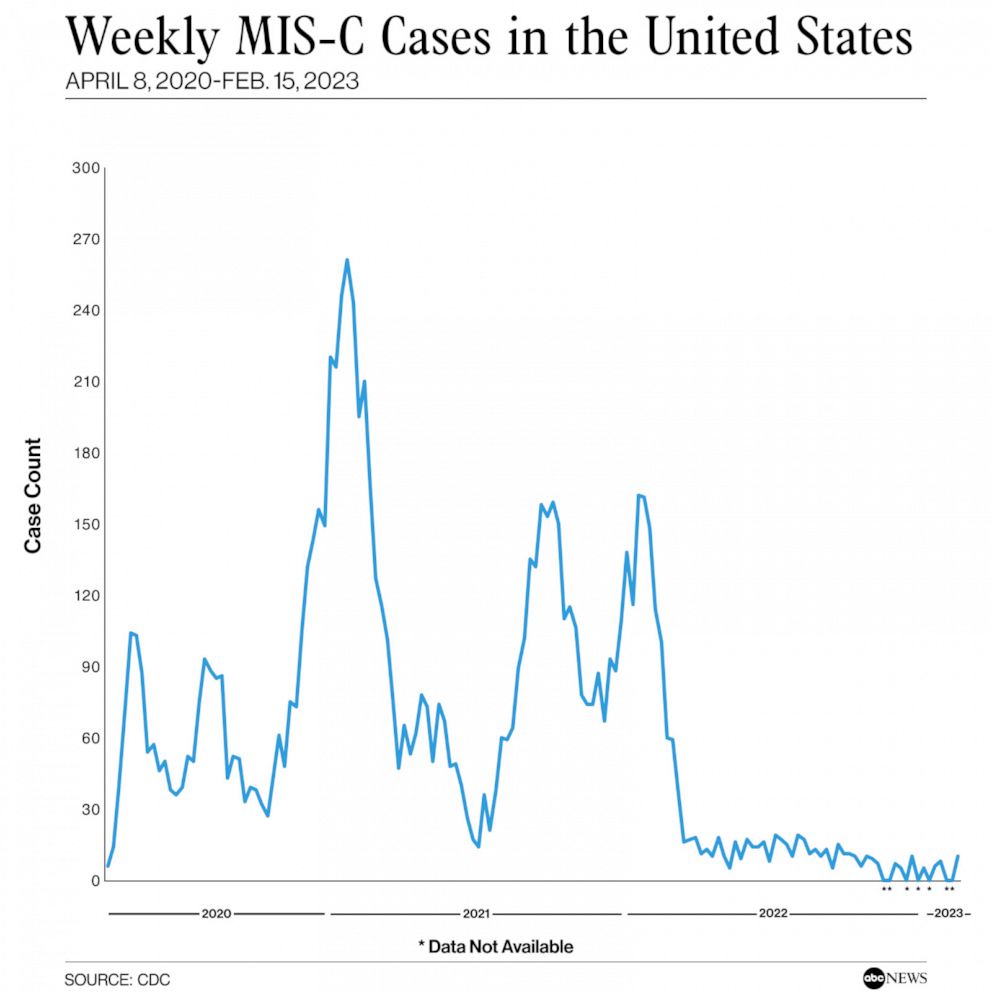Mysterious Drop in MIS-C Cases Raises Questions for Experts
During the early days of the COVID-19 pandemic, one of the most concerning complications children were experiencing was MIS-C, or multisystem inflammatory syndrome in children. This condition, characterized by inflammation in various parts of the body, often occurs in children after they are diagnosed with COVID-19. However, experts are now puzzled by the significant drop in MIS-C cases in recent months.
According to data from the Centers for Disease Control and Prevention (CDC), there have been 9,499 reported cases of MIS-C and 79 deaths over the course of the pandemic. Cases of MIS-C skyrocketed during the first year of the pandemic but have since dropped dramatically and almost disappeared entirely.
Experts have proposed several possible reasons for this decline. One explanation is that more children have developed immunity to COVID-19, either through previous infection or vaccination. CDC data shows that an estimated 91.9% of Americans between the ages of 6 months and 17 years have antibodies due to previous COVID-19 infection. When accounting for infection and vaccination, the percentage increases to 96.3%.
Another factor that may contribute to the decrease in MIS-C cases is the emergence of newer variants of the virus, which may cause less severe complications. Experts believe that the delta variant, which surged in the summer and fall of 2021, contributed to more MIS-C cases than previous variants. However, the omicron variant, despite causing a significant surge in overall COVID-19 cases, did not lead to a corresponding increase in MIS-C cases.
“It is definitely a medical mystery,” said Dr. Elizabeth Schlaudecker, medical director of Cincinnati Children’s division of infectious diseases. “We haven’t figured it out yet. We’re still working on it.”
MIS-C is a serious condition that often requires hospitalization, and some children may even end up in intensive care units. Treatment options for MIS-C include anti-inflammatory medications and intravenous immunoglobulin therapy.
While the drop in MIS-C cases is encouraging, experts caution that the threat is not completely gone. Another highly infectious subvariant could lead to a surge in cases. Therefore, they emphasize the importance of remaining vigilant and continuing to follow preventive measures such as vaccination and masking.
Parents are advised to be aware of the signs of MIS-C, which include prolonged fever, severe abdominal pain, red eyes, rash, and red lips. If these symptoms occur, seeking medical attention is crucial to determine the cause and receive appropriate care.
The decline in MIS-C cases remains a medical mystery, but ongoing research and vigilance will help experts better understand and address this condition in the future.

What further research is needed to fully understand the factors contributing to the decline in MIS-C cases and its implications for pediatric health
Fection or vaccination. As more children are exposed to the virus, their immune systems may be better equipped to prevent the development of MIS-C.
Another theory put forth by experts is that the emergence of new variants of the virus may be associated with a decrease in MIS-C cases. It is possible that these variants are less likely to trigger the inflammatory response seen in MIS-C, leading to a decline in cases.
Furthermore, changes in testing and reporting practices may also contribute to the decrease in MIS-C cases. As testing and surveillance systems improve, it is possible that cases are being identified and reported more accurately, leading to a better understanding of the true prevalence of MIS-C.
However, experts caution that despite the decline in cases, MIS-C can still occur and should not be taken lightly. Although it is a rare condition, it can be severe and even fatal. Parents and healthcare providers should remain vigilant and continue to monitor for any signs or symptoms of MIS-C in children who have had COVID-19.
The drop in MIS-C cases raises important questions for experts to investigate. Understanding the factors contributing to this decline can provide valuable insights into the development and prevention of this condition. Further research is needed to assess the long-term impacts of COVID-19 on children and to ensure timely diagnosis and treatment for those who develop MIS-C.
In conclusion, the significant decrease in MIS-C cases during the COVID-19 pandemic has left experts puzzled. Possible explanations include increased immunity among children, the emergence of new variants, and improvements in testing and reporting practices. While the drop in cases is promising, caution should still be exercised as MIS-C can still occur and have severe consequences. Further investigation is necessary to fully understand this phenomenon and its implications for pediatric health.

This significant drop in MIS-C cases among children is indeed a silver lining during these uncertain times. Understanding and unraveling the mysterious decline can provide valuable insights that could potentially aid in safeguarding children’s health from COVID-19 complications.
It is a great relief to see MIS-C cases dropping dramatically. This mysterious decline in children’s complications from COVID-19 brings much-needed hope and highlights the importance of continuing preventive measures to protect our younger population.